Global food stabilizers (blends & systems) market is expected to reach USD 12,700.3 Million by 2025 at a CAGR of 5.5% during the forecast period from 2018-2025. Ability to improve and enhance the quality and appearance of the food products and huge investments in the global food stabilizer (blends & systems) market which is mobilizing the growth of the market.
Market Overview:
A food stabilizer is defined as an additive used in the food to preserve it. They help in preventing any leak and separation of oil and water in food items such as salad and helps to restore them perfectly. Food stabilizers are materials or chemicals that does not allow any mixing of food ingredients so that they can stay homogenous. It upholds the physiochemical state of a foodstuff to ensure homogeneous dispersion. It helps to retain the color, shape, texture, consistency, and stability of food products. They are also used in ice creams to prevent any formation of ice crystals upon its surface. Hydrocolloids such as agar, alginate, cellulose and cellulose derivatives, carrageen, guar gum, gelatin, starch, pectin, and xanthan gum are main food stabilizers that are used in food substances. The benefits of using food stabilizers in substances have led to increasing in their demand, in a wide range of food products such as bakery, confectionery, dairy product, beverage & convenience food, sauce, and others. For instance, Kerry launched a new production plant in Moscow, Russia to serve global and regional customer base in the Russian market; as well as in countries such as Belarus, Tajikistan, Kazakhstan, Uzbekistan, and Azerbaijan.
Report Description:
Market Dynamics:
Drivers:
Restraints:
Opportunities:
Challenges:
Global Food Stabilizers (Blends & Systems) Market Key Findings:
All the segments have been analyzed on global, regional and country basis. The study includes an analysis of more than 30 countries for each segment.
Segmentation Analysis:
The Food Stabilizers (Blends & Systems) market is segmented by source, function, application.
Regional Segmentation Analysis:
The regions analyzed for the market include North America, Europe, South America, Asia Pacific, and the Middle East and Africa. Europe region dominated the global Food Stabilizers (Blends & Systems) market with USD 3,213.21 Million in 2017 whereas the Asia Pacific region held the second dominant position in the market.
Global Food Stabilizers (Blends & Systems) Market Competitive Analysis:
Key players in the Food Stabilizers (Blends & Systems) market are Glanbia Nutritionals, E. I. DuPont de Nemours and Company, Kerry Inc., Cargill, Inc., Ashland Inc., Associated British Foods Plc., Koninklijke DSM N.V., Chemelco International B.V., Archer Daniels Midland Company, and Advanced food systems, Palsgaard, Tate & Lyle, Celanese Corporation, Chr. Hansen A/S, and Nexira, Eurogum A/S, Unipektin Ingredients AG, Holton Food Products, Deosen Biochemical Ltd., and Naturex SA. For instance, DowDuPont acquired FMC Corporation’s (US) Health & Nutrition business. FMC Corporation is a leading chemical manufacturing company. This acquisition would help the company to strengthen its specialty ingredient business.
This study forecasts revenue growth at global, regional, and country levels from 2015 to 2025. Fior Market Research has segmented the global Food Stabilizers (Blends & Systems) market on the basis of below mentioned segments:
Global Food Stabilizers (Blends & Systems) Market, By Source:
Global Food Stabilizers (Blends & Systems) Market, By Function:
Global Food Stabilizers (Blends & Systems) Market, By Application:
Global Food Stabilizers (Blends & Systems) Market, By Regions:
*All our reports are customizable as per customer requirements
1. Introduction
1.1. Objectives of the Study
1.2. Market Definition
1.3. Research Scope
1.4. Currency
2. Research Methodology and Assumptions
3. Executive Summary
4. Premium Insights
4.1. Porter’s Five Forces Analysis
4.2. Value Chain Analysis
4.3. Top Investment Pockets
4.3.1. Market attractiveness analysis by Source
4.3.2. Market attractiveness analysis by Function
4.3.3. Market attractiveness analysis by Application
4.3.4. Market attractiveness analysis by Region
4.4. Industry Trends
5. Market Dynamics
5.1. Market Evaluation
5.2. Drivers
5.2.1. Capability to enhance the quality and appearance of the food products
5.2.2. Huge investments in the global food stabilizer (blends & systems) market is providing more job opportunities leading to growth.
5.2.3. Involves less cost of raw materials
5.2.4. Availability of labour at low cost
5.3. Restraints
5.3.1. High cost associated with its maintenance and transportation
5.3.2. Strict international quality standards and regulations
5.4. Opportunities
5.4.1. Large investments for research & development to develop new products
5.5. Challenges
5.5.1. Consumer preference for clean label products and perception of food labeling
6. Global Food Stabilizers (Blends & Systems) Market Analysis and Forecast, By Source
6.1. Segment Overview
6.2. Plant
6.3. Seaweed
6.4. Microbial
6.5. Animal
6.6. Synthetic
7. Global Food Stabilizers (Blends & Systems) Market Analysis and Forecast, By Function
7.1. Segment Overview
7.2. Texturizing
7.3. Stabilizing
7.4. Moisture Retention
7.5. Other Functions
8. Global Food Stabilizers (Blends & Systems) Market Analysis and Forecast, By Application
8.1. Segment Overview
8.2. Dairy & Dairy Products
8.3. Confectionery Products
8.4. Convenience Foods
8.5. Bakery Products
8.6. Meat & Poultry Products
8.7. Beverages
8.8. Sauces & Dressings
8.9. Others
9. Global Food Stabilizers (Blends & Systems) Market Analysis and Forecast, By Regional Analysis
9.1. Segment Overview
9.2. North America
9.2.1. U.S.
9.2.2. Canada
9.2.3. Mexico
9.3. Europe
9.3.1. Germany
9.3.2. France
9.3.3. Sweden
9.3.4. Netherlands
9.3.5. U.K.
9.3.6. Italy
9.3.7. Spain
9.3.8. Turkey
9.3.9. Switzerland
9.3.10. Belgium
9.3.11. Rest of Europe
9.4. Asia-Pacific
9.4.1. Japan
9.4.2. China
9.4.3. India
9.4.4. South Korea
9.4.5. Australia
9.4.6. Singapore
9.4.7. Malaysia
9.4.8. Thailand
9.4.9. Indonesia
9.4.10. Philippines
9.4.11. Rest of Asia-Pacific
9.5. South America
9.5.1. Brazil
9.5.2. Argentina
9.5.3. Colombia
9.5.4. Rest of South America
9.6. Middle East and Africa
9.6.1. Saudi Arabia
9.6.2. UAE
9.6.3. Egypt
9.6.4. Nigeria
9.6.5. South Africa
9.6.6. Rest of Middle East and Africa
10. Global Food Stabilizers (Blends & Systems) Market-Competitive Landscape
10.1. Overview
10.2. Market Share of Key Players in the Food Stabilizers (Blends & Systems) Market
10.2.1. Global Company Market Share
10.2.2. North America Company Market Share
10.2.3. Europe Company Market Share
10.2.4. APAC Company Market Share
10.3. Competitive Situations and Trends
10.3.1. Function Launches and Developments
10.3.2. Partnerships, Collaborations, and Agreements
10.3.3. Mergers & Acquisitions
10.3.4. Expansions
11. Company Profiles
11.1. Glanbia Nutritionals
11.1.1. Business Overview
11.1.2. Company Snapshot
11.1.3. Company Market Share Analysis
11.1.4. Company Function Portfolio
11.1.5. Recent Developments
11.1.6. SWOT Analysis
11.2. E. I. DuPont de Nemours and Company
11.2.1. Business Overview
11.2.2. Company Snapshot
11.2.3. Company Market Share Analysis
11.2.4. Company Function Portfolio
11.2.5. Recent Developments
11.2.6. SWOT Analysis
11.3. Kerry Inc
11.3.1. Business Overview
11.3.2. Company Snapshot
11.3.3. Company Market Share Analysis
11.3.4. Company Function Portfolio
11.3.5. Recent Developments
11.3.6. SWOT Analysis
11.4. Cargill, Inc.
11.4.1. Business Overview
11.4.2. Company Snapshot
11.4.3. Company Market Share Analysis
11.4.4. Company Function Portfolio
11.4.5. Recent Developments
11.4.6. SWOT Analysis
11.5. Ashland Inc
11.5.1. Business Overview
11.5.2. Company Snapshot
11.5.3. Company Market Share Analysis
11.5.4. Company Function Portfolio
11.5.5. Recent Developments
11.5.6. SWOT Analysis
11.6. Associated British Foods Plc
11.6.1. Business Overview
11.6.2. Company Snapshot
11.6.3. Company Market Share Analysis
11.6.4. Company Function Portfolio
11.6.5. Recent Developments
11.6.6. SWOT Analysis
11.7. Koninklijke DSM N.V
11.7.1. Business Overview
11.7.2. Company Snapshot
11.7.3. Company Market Share Analysis
11.7.4. Company Function Portfolio
11.7.5. Recent Developments
11.7.6. SWOT Analysis
11.8. Chemelco International B.V
11.8.1. Business Overview
11.8.2. Company Snapshot
11.8.3. Company Market Share Analysis
11.8.4. Company Function Portfolio
11.8.5. Recent Developments
11.8.6. SWOT Analysis
11.9. Archer Daniels Midland Company
11.9.1. Business Overview
11.9.2. Company Snapshot
11.9.3. Company Market Share Analysis
11.9.4. Company Function Portfolio
11.9.5. Recent Developments
11.9.6. SWOT Analysis
11.10. Advanced food systems
11.10.1. Business Overview
11.10.2. Company Snapshot
11.10.3. Company Market Share Analysis
11.10.4. Company Function Portfolio
11.10.5. Recent Developments
11.10.6. SWOT Analysis
11.11. Palsgaard
11.11.1. Business Overview
11.11.2. Company Snapshot
11.11.3. Company Market Share Analysis
11.11.4. Company Function Portfolio
11.11.5. Recent Developments
11.11.6. SWOT Analysis
11.12. Tate & Lyle
11.12.1. Business Overview
11.12.2. Company Snapshot
11.12.3. Company Market Share Analysis
11.12.4. Company Function Portfolio
11.12.5. Recent Developments
11.12.6. SWOT Analysis
11.13. Celanese Corporation
11.13.1. Business Overview
11.13.2. Company Snapshot
11.13.3. Company Market Share Analysis
11.13.4. Company Function Portfolio
11.13.5. Recent Developments
11.13.6. SWOT Analysis
11.14. Chr. Hansen A/S
11.14.1. Business Overview
11.14.2. Company Snapshot
11.14.3. Company Market Share Analysis
11.14.4. Company Function Portfolio
11.14.5. Recent Developments
11.14.6. SWOT Analysis
11.15. Nexira
11.15.1. Business Overview
11.15.2. Company Snapshot
11.15.3. Company Market Share Analysis
11.15.4. Company Function Portfolio
11.15.5. Recent Developments
11.15.6. SWOT Analysis
List of Table
1. Global Food Stabilizers (Blends & Systems) Market, By Source, 2015–2025 (USD Million)
2. Global Plant Food Stabilizers (Blends & Systems) Market, By Region, 2015–2025 (USD Million)
3. Global Seaweed Food Stabilizers (Blends & Systems) Market, By Region, 2015–2025 (USD Million)
4. Global Microbial Food Stabilizers (Blends & Systems) Market, By Region, 2015–2025 (USD Million)
5. Global Animal Food Stabilizers (Blends & Systems) Market, By Region, 2015–2025 (USD Million)
6. Global Synthetic Food Stabilizers (Blends & Systems) Market, Region, 2015–2025 (USD Million)
7. Global Food Stabilizers (Blends & Systems) Market, By Function, 2015–2025 (USD Million)
8. Global Texturizing Food Stabilizers (Blends & Systems) Market, BY Region, 2015–2025 (USD Million)
9. Global Stabilizing Food Stabilizers (Blends & Systems) Market, By Region, 2015–2025 (USD Million)
10. Global Moisture Retention Food Stabilizers (Blends & Systems) Market, By Region, 2015–2025 (USD Million)
11. Global Other Functions Food Stabilizers (Blends & Systems) Market, By Region, 2015–2025 (USD Million)
12. Global Food Stabilizers (Blends & Systems) Market, By Application, 2015–2025 (USD Million)
13. Global Confectionery Products Food Stabilizers (Blends & Systems) Market, By Region, 2015–2025 (USD Million)
14. Global Convenience Foods Food Stabilizers (Blends & Systems) Market, By Region, 2015–2025 (USD Million)
15. Global Bakery Products Food Stabilizers (Blends & Systems) Market, By Region, 2015–2025 (USD Million)
16. Global Meat & Poultry Products Food Stabilizers (Blends & Systems) Market, By Region, 2015–2025 (USD Million)
17. Global Beverages Food Stabilizers (Blends & Systems) Market, By Region, 2015–2025 (USD Million)
18. Global Sauces & Dressings Food Stabilizers (Blends & Systems) Market, By Region, 2015–2025 (USD Million)
19. Global Others Food Stabilizers (Blends & Systems) Market, By Region, 2015–2025 (USD Million)
20. Global Food Stabilizers (Blends & Systems) Market, By Region, 2015–2025 (USD Million)
21. North America Food Stabilizers (Blends & Systems) Market, By Source, 2015–2025 (USD Million)
22. North America Food Stabilizers (Blends & Systems) Market, By Function, 2015–2025 (USD Million)
23. North America Food Stabilizers (Blends & Systems) Market, By Application, 2015–2025 (USD Million)
24. U.S. Food Stabilizers (Blends & Systems) Market, By Source, 2015–2025 (USD Million)
25. U.S. Food Stabilizers (Blends & Systems) Market, By Function, 2015–2025 (USD Million)
26. U.S. Food Stabilizers (Blends & Systems) Market, By Application, 2015–2025 (USD Million)
27. Canada Food Stabilizers (Blends & Systems) Market, By Source, 2015–2025 (USD Million)
28. Canada Food Stabilizers (Blends & Systems) Market, By Function, 2015–2025 (USD Million)
29. Canada Food Stabilizers (Blends & Systems) Market, By Application, 2015–2025 (USD Million)
30. Mexico Food Stabilizers (Blends & Systems) Market, By Source, 2015–2025 (USD Million)
31. Mexico Food Stabilizers (Blends & Systems) Market, By Function, 2015–2025 (USD Million)
32. Mexico Food Stabilizers (Blends & Systems) Market, By Application, 2015–2025 (USD Million)
33. Europe Food Stabilizers (Blends & Systems) Market, By Source, 2015–2025 (USD Million)
34. Europe Food Stabilizers (Blends & Systems) Market, By Function, 2015–2025 (USD Million)
35. Europe Food Stabilizers (Blends & Systems) Market, By Application, 2015–2025 (USD Million)
36. Germany Food Stabilizers (Blends & Systems) Market, By Source, 2015–2025 (USD Million)
37. Germany Food Stabilizers (Blends & Systems) Market, By Function, 2015–2025 (USD Million)
38. Germany Food Stabilizers (Blends & Systems) Market, By Application, 2015–2025 (USD Million)
39. France Food Stabilizers (Blends & Systems) Market, By Source, 2015–2025 (USD Million)
40. France Food Stabilizers (Blends & Systems) Market, By Function, 2015–2025 (USD Million)
41. France Food Stabilizers (Blends & Systems) Market, By Application, 2015–2025 (USD Million)
42. Sweden Food Stabilizers (Blends & Systems) Market, By Source, 2015–2025 (USD Million)
43. Sweden Food Stabilizers (Blends & Systems) Market, By Function, 2015–2025 (USD Million)
44. Sweden Food Stabilizers (Blends & Systems) Market, By Application, 2015–2025 (USD Million)
45. Netherlands Food Stabilizers (Blends & Systems) Market, By Source, 2015–2025 (USD Million)
46. Netherlands Food Stabilizers (Blends & Systems) Market, By Function, 2015–2025 (USD Million)
47. Netherlands Food Stabilizers (Blends & Systems) Market, By Application, 2015–2025 (USD Million)
48. U.K. Food Stabilizers (Blends & Systems) Market, By Source, 2015–2025 (USD Million)
49. U.K. Food Stabilizers (Blends & Systems) Market, By Function, 2015–2025 (USD Million)
50. U.K. Food Stabilizers (Blends & Systems) Market, By Application, 2015–2025 (USD Million)
51. Italy Food Stabilizers (Blends & Systems) Market, By Source, 2015–2025 (USD Million)
52. Italy Food Stabilizers (Blends & Systems) Market, By Function, 2015–2025 (USD Million)
53. Italy Food Stabilizers (Blends & Systems) Market, By Application, 2015–2025 (USD Million)
54. Spain Food Stabilizers (Blends & Systems) Market, By Source, 2015–2025 (USD Million)
55. Spain Food Stabilizers (Blends & Systems) Market, By Function, 2015–2025 (USD Million)
56. Spain Food Stabilizers (Blends & Systems) Market, By Application, 2015–2025 (USD Million)
57. Turkey Food Stabilizers (Blends & Systems) Market, By Source, 2015–2025 (USD Million)
58. Turkey Food Stabilizers (Blends & Systems) Market, By Function, 2015–2025 (USD Million)
59. Turkey Food Stabilizers (Blends & Systems) Market, By Application, 2015–2025 (USD Million)
60. Switzerland Food Stabilizers (Blends & Systems) Market, By Source, 2015–2025 (USD Million)
61. Switzerland Food Stabilizers (Blends & Systems) Market, By Function, 2015–2025 (USD Million)
62. Switzerland Food Stabilizers (Blends & Systems) Market, By Application, 2015–2025 (USD Million)
63. Belgium Food Stabilizers (Blends & Systems) Market, By Source, 2015–2025 (USD Million)
64. Belgium Food Stabilizers (Blends & Systems) Market, By Function, 2015–2025 (USD Million)
65. Belgium Food Stabilizers (Blends & Systems) Market, By Application, 2015–2025 (USD Million)
66. Asia Pacific Food Stabilizers (Blends & Systems) Market, By Source, 2015–2025 (USD Million)
67. Asia Pacific Food Stabilizers (Blends & Systems) Market, By Function, 2015–2025 (USD Million)
68. Asia Pacific Food Stabilizers (Blends & Systems) Market, By Application, 2015–2025 (USD Million)
69. Japan Food Stabilizers (Blends & Systems) Market, By Source, 2015–2025 (USD Million)
70. Japan Food Stabilizers (Blends & Systems) Market, By Function, 2015–2025 (USD Million)
71. Japan Food Stabilizers (Blends & Systems) Market, By Application, 2015–2025 (USD Million)
72. China Food Stabilizers (Blends & Systems) Market, By Source, 2015–2025 (USD Million)
73. China Food Stabilizers (Blends & Systems) Market, By Function, 2015–2025 (USD Million)
74. China Food Stabilizers (Blends & Systems) Market, By Application, 2015–2025 (USD Million)
75. India Food Stabilizers (Blends & Systems) Market, By Source, 2015–2025 (USD Million)
76. India Food Stabilizers (Blends & Systems) Market, By Function, 2015–2025 (USD Million)
77. India Food Stabilizers (Blends & Systems) Market, By Application, 2015–2025 (USD Million)
78. South Korea Food Stabilizers (Blends & Systems) Market, By Source, 2015–2025 (USD Million)
79. South Korea Food Stabilizers (Blends & Systems) Market, By Function, 2015–2025 (USD Million)
80. South Korea Food Stabilizers (Blends & Systems) Market, By Application, 2015–2025 (USD Million)
81. Australia Food Stabilizers (Blends & Systems) Market, By Source, 2015–2025 (USD Million)
82. Australia Food Stabilizers (Blends & Systems) Market, By Function, 2015–2025 (USD Million)
83. Australia Food Stabilizers (Blends & Systems) Market, By Application, 2015–2025 (USD Million)
84. Singapore Food Stabilizers (Blends & Systems) Market, By Source, 2015–2025 (USD Million)
85. Singapore Food Stabilizers (Blends & Systems) Market, By Function, 2015–2025 (USD Million)
86. Singapore Food Stabilizers (Blends & Systems) Market, By Application, 2015–2025 (USD Million)
87. Malaysia Food Stabilizers (Blends & Systems) Market, By Source, 2015–2025 (USD Million)
88. Malaysia Food Stabilizers (Blends & Systems) Market, By Function, 2015–2025 (USD Million)
89. Malaysia Food Stabilizers (Blends & Systems) Market, By Application, 2015–2025 (USD Million)
90. Thailand Food Stabilizers (Blends & Systems) Market, By Source, 2015–2025 (USD Million)
91. Thailand Food Stabilizers (Blends & Systems) Market, By Function, 2015–2025 (USD Million)
92. Thailand Food Stabilizers (Blends & Systems) Market, By Application, 2015–2025 (USD Million)
93. Indonesia Food Stabilizers (Blends & Systems) Market, By Source, 2015–2025 (USD Million)
94. Indonesia Food Stabilizers (Blends & Systems) Market, By Function, 2015–2025 (USD Million)
95. Indonesia Food Stabilizers (Blends & Systems) Market, By Application, 2015–2025 (USD Million)
96. Philippines Food Stabilizers (Blends & Systems) Market, By Source, 2015–2025 (USD Million)
97. Philippines Food Stabilizers (Blends & Systems) Market, By Function, 2015–2025 (USD Million)
98. Philippines Food Stabilizers (Blends & Systems) Market, By Application, 2015–2025 (USD Million)
99. South America Food Stabilizers (Blends & Systems) Market, By Source, 2015–2025 (USD Million)
100. South America Food Stabilizers (Blends & Systems) Market, By Function, 2015–2025 (USD Million)
101. South America Food Stabilizers (Blends & Systems) Market, By Application, 2015–2025 (USD Million)
102. Brazil Food Stabilizers (Blends & Systems) Market, By Source, 2015–2025 (USD Million)
103. Brazil Food Stabilizers (Blends & Systems) Market, By Function, 2015–2025 (USD Million)
104. Brazil Food Stabilizers (Blends & Systems) Market, By Application, 2015–2025 (USD Million)
105. Argentina Food Stabilizers (Blends & Systems) Market, By Source, 2015–2025 (USD Million)
106. Argentina Food Stabilizers (Blends & Systems) Market, By Function, 2015–2025 (USD Million)
107. Argentina Food Stabilizers (Blends & Systems) Market, By Application, 2015–2025 (USD Million)
108. Colombia Food Stabilizers (Blends & Systems) Market, By Source, 2015–2025 (USD Million)
109. Colombia Food Stabilizers (Blends & Systems) Market, By Function, 2015–2025 (USD Million)
110. Colombia Food Stabilizers (Blends & Systems) Market, By Application, 2015–2025 (USD Million)
111. Middle East and Africa Food Stabilizers (Blends & Systems) Market, By Source, 2015–2025 (USD Million)
112. Middle East and Africa Food Stabilizers (Blends & Systems) Market, By Function, 2015–2025 (USD Million)
113. Middle East and Africa Food Stabilizers (Blends & Systems) Market, By Application, 2015–2025 (USD Million)
114. Saudi Arabia Food Stabilizers (Blends & Systems) Market, By Source, 2015–2025 (USD Million)
115. Saudi Arabia Food Stabilizers (Blends & Systems) Market, By Function, 2015–2025 (USD Million)
116. Saudi Arabia Food Stabilizers (Blends & Systems) Market, By Application, 2015–2025 (USD Million)
117. UAE Food Stabilizers (Blends & Systems) Market, By Source, 2015–2025 (USD Million)
118. UAE Food Stabilizers (Blends & Systems) Market, By Function, 2015–2025 (USD Million)
119. UAE Food Stabilizers (Blends & Systems) Market, By Application, 2015–2025 (USD Million)
120. Egypt Food Stabilizers (Blends & Systems) Market, By Source, 2015–2025 (USD Million)
121. Egypt Food Stabilizers (Blends & Systems) Market, By Function, 2015–2025 (USD Million)
122. Egypt Food Stabilizers (Blends & Systems) Market, By Application, 2015–2025 (USD Million)
123. Nigeria Food Stabilizers (Blends & Systems) Market, By Source, 2015–2025 (USD Million)
124. Nigeria Food Stabilizers (Blends & Systems) Market, By Function, 2015–2025 (USD Million)
125. Nigeria Food Stabilizers (Blends & Systems) Market, By Application, 2015–2025 (USD Million)
126. South Africa Food Stabilizers (Blends & Systems) Market, By Source, 2015–2025 (USD Million)
127. South Africa Food Stabilizers (Blends & Systems) Market, By Function, 2015–2025 (USD Million)
128. South Africa Food Stabilizers (Blends & Systems) Market, By Application, 2015–2025 (USD Million)
List of Figures
1. Global Food Stabilizers (Blends & Systems) Market Segmentation
2. Food Stabilizers (Blends & Systems) Market: Research Methodology
3. Market Size Estimation Methodology: Bottom-Up Approach
4. Market Size Estimation Methodology: Top-Down Approach
5. Data Triangulation
6. Porter’s Five Forces Analysis
7. Value Chain Analysis
8. Global Food Stabilizers (Blends & Systems) Market attractiveness analysis by Source
9. Global Food Stabilizers (Blends & Systems) Market attractiveness analysis by Function
10. Global Food Stabilizers (Blends & Systems) Market attractiveness analysis by Application
11. Global Food Stabilizers (Blends & Systems) Market attractiveness analysis by Region
12. Global Food Stabilizers (Blends & Systems) Machine Market: Dynamics
13. Global Food Stabilizers (Blends & Systems) Machine Market Share by Sources (2017 & 2025)
14. Global Food Stabilizers (Blends & Systems) Machine Market Share by Functions (2017 & 2025)
15. Global Food Stabilizers (Blends & Systems) Machine Market Share by Application (2017 & 2025)
16. Global Food Stabilizers (Blends & Systems) Machine Market Share by Regions (2017 & 2025)
17. Global Food Stabilizers (Blends & Systems) Machine Market Share by Company (2018)
Market research is a method of gathering, assessing and deducing data & information about a particular market. Market research is very crucial in these days. The techniques analyze about how a product/service can be offered to the market to its end-customers, observe the impact of that product/service based on the past customer experiences, and cater their needs and demands. Owing to the successful business ventures, accurate, relevant and thorough information is the base for all the organizations because market research report/study offers specific market related data & information about the industry growth prospects, perspective of the existing customers, and the overall market scenario prevailed in past, ongoing present and developing future. It allows the stakeholders and investors to determine the probability of a business before committing substantial resources to the venture. Market research helps in solving the marketing issues challenges that a business will most likely face.
Market research is valuable because of the following reasons:
Our research report features both the aspects; qualitative and quantitative. Qualitative part provides insights about the market driving forces, potential opportunities, customer’s demands and requirement which in turn help the companies to come up with new strategies in order to survive in the long run competition. The quantitative segment offers the most credible information related to the industry. Based on the data gathering, we use to derive the market size and estimate their future growth prospects on the basis of global, region and country.
Our market research process involves with the four specific stages.

Data Collection: This stage of the market research process involves with the gathering and collecting of the market/industry related data from the sources. There are basically two types of research methods:
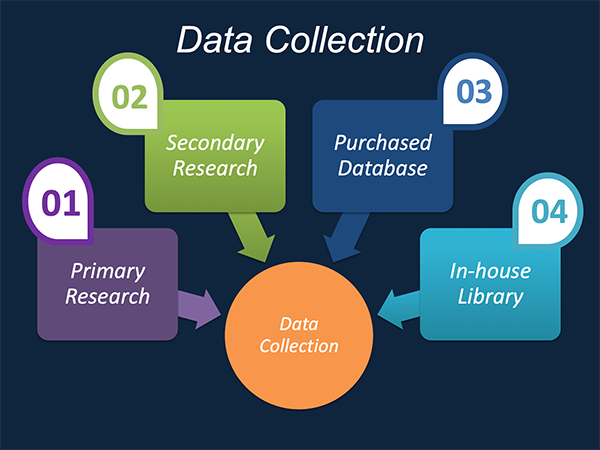
Data Synthesis: This stage includes the evaluation and assessment of all the data acquired from the primary and secondary research. It likewise includes in evaluating the information for any disparity watched while information gathering identified with the market. The data & information is gathered with consideration to the heterogeneity of sources. Scientific and statistical methods are implemented for synthesizing dissimilar information sets and provide the relevant data which is fundamental for formulating strategies. Our organization has broad involvement with information amalgamation where the information goes through different stages:


Market Formulation & Deduction: The last stage includes assigning the data & information in a suitable way in order to derive market size. Analyst reviews and domain based opinions based on holistic approach of market estimation combined with industry investigation additionally features a crucial role in this stage.
This stage includes with the finalization of the market size and numbers that we have gathered from primary and secondary research. With the data & information addition, we ensure that there is no gap in the market information. Market trend analysis is finished by our analysts by utilizing data extrapolation procedures, which give the most ideal figures to the market.
Data Validation: Validation is the most crucial step in the process. Validation & re-validation through scientifically designed technique and process that helps us finalize data-points to be used for final calculations. This stage also involves with the data triangulation process. Data triangulation generally implicates the cross validation and matching the data which has been collected from primary and secondary research methods.





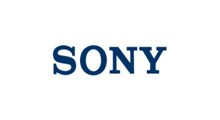

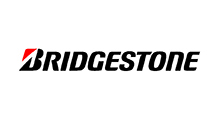

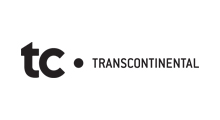















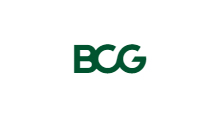


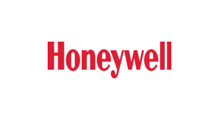

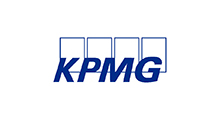
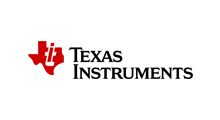



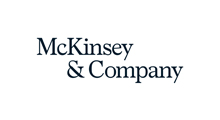

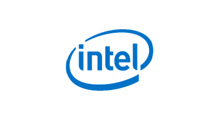







Free Customization
Countries can be added on demand
Free yearly update on purchase of Multi/Corporate User License
Companies served till date

We serve our customers 24x7 for 365 days through calls, emails and live chat options.

Huge database of exceptional market reports bringing market intelligence to your fingertips.

SSL enabled, we offer you various secured payment options for risk free purchase.